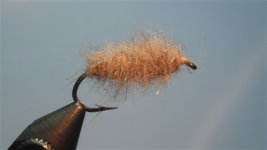jifigz wrote:
ryansheehan wrote:
I have an electronic stringing machine accurate to a 10th of a pound. I'm not sure how familiar you are with racket stringers but they clamp down on string and will tighten to a tension. All I did was tie a knot I wanted to test, secure one end to a clamp and put the other end into the tensioner. The display tells you the tension and I would increase by a 10th of a pound until it broke. Pretty simple, I was just messing around one day to see my knot strength, I was less than impressed with all the ones I tried. They were no where near %100.
That's awesome Ryan. Thanks for letting me know how you did that...sounds like a good accurate way to get a gauge of strength. Have you ever tested the Blood Knot since others have chimed in on that one?
And I agree....I'll tie my double surgeon's and hopefully have another fish on by the time you guys are still tying the blood knot.
In all reality tippet rings make sense to me. I've been out of them for quite a while, but......when I last had them two years ago or so I loved them.
int:




